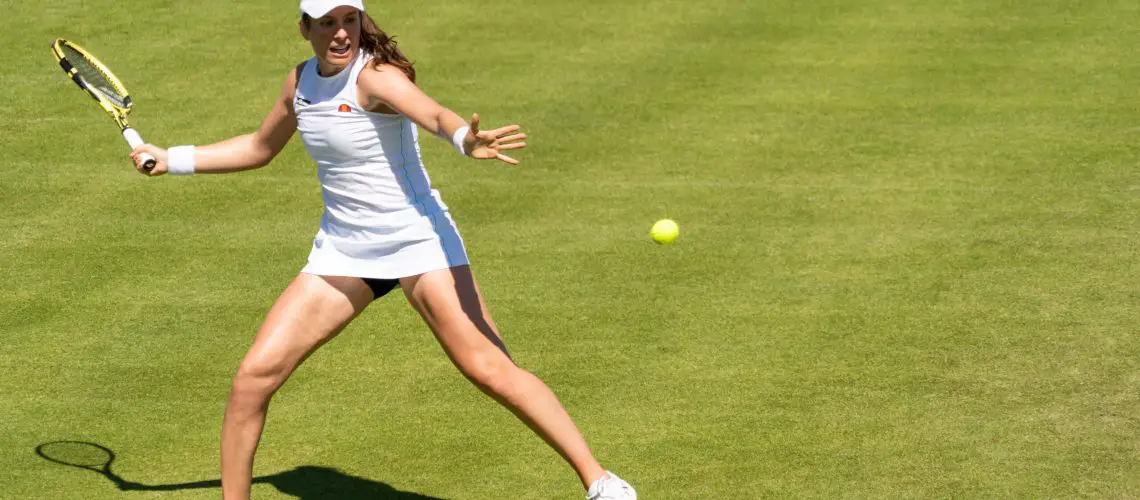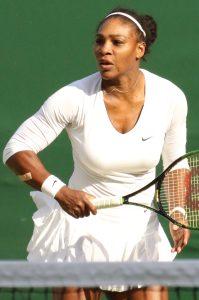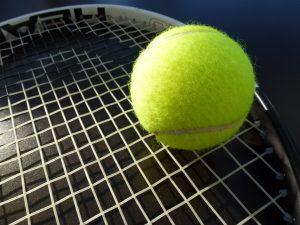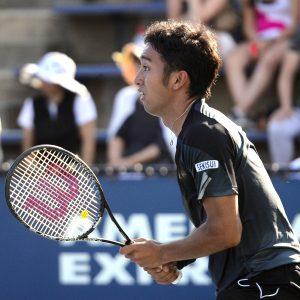We may earn money or products from the companies mentioned in this post.
Introduction to Aiming in Tennis

When it comes to the game of tennis, aiming is an essential skill that can greatly impact a player’s performance Whether you’re a beginner or an experienced player, having the ability to aim your shots accurately can make all the difference on the court
The importance of aiming in tennis
Aiming in tennis goes beyond simply hitting the ball over the net It plays a crucial role in enhancing accuracy and consistency, allowing players to place their shots precisely where they want them to go By mastering this skill, players can strategically target specific areas of the court, making it more challenging for their opponents to return the ball effectively
Furthermore, aiming well can lead to winning more points and ultimately more matches When players are able to consistently hit their intended targets, they create opportunities for themselves by putting their opponents under pressure and forcing errors This increases their chances of securing victories and achieving success on the court
The role of proper technique in aiming
To effectively aim in tennis, it is essential to have proper technique This includes focusing on two key aspects: footwork and body position as well as stroke mechanics
Footwork and body position play a vital role in setting up for a shot with accuracy Having good footwork allows players to move efficiently around the court and position themselves optimally for each shot By being in the right position before hitting the ball, players can better align themselves with their intended target
In addition to footwork and body position, stroke mechanics also contribute significantly to aiming correctly Each stroke requires precise coordination between various body parts, such as arms, wrists, and legs Developing sound stroke mechanics ensures that players have control over where they direct the ball during different shots – be it forehand, backhand, or serve
In conclusion, aiming is a fundamental skill in tennis that can greatly impact a player’s performance By enhancing accuracy and consistency, players can win more points and matches This requires mastering proper technique, including footwork and body position as well as stroke mechanics So, if you want to elevate your game on the court, investing time and effort into improving your aiming skills will undoubtedly yield positive results
Basic Principles for Effective Aiming in Tennis

Court geometry and target areas
When it comes to aiming in tennis, understanding the court geometry and target areas is crucial The lines and angles on a tennis court play a significant role in determining where you should aim your shots Familiarize yourself with the baselines, sidelines, service boxes, and other key markings that define the court
Additionally, knowing the difference between cross-court and down-the-line shots is essential Cross-court shots typically travel diagonally across the court, while down-the-line shots go straight along the lines Being aware of these shot options opens up various aiming possibilities
Target zones for different types of shots
To effectively aim your shots, you need to understand the target zones specific to each type of shot For groundstrokes, such as forehands and backhands, aiming deep with margin is crucial This means hitting the ball with enough power and accuracy to clear the net comfortably while keeping it close to the baseline
When it comes to volleys, angled or short shots are often more effective Angled volleys force your opponent to cover more distance on their return, while short volleys can catch them off guard by reducing their reaction time
Serves require strategic targeting as well You have several options like wide serves which stretch your opponent out wide towards the sidelines; body serves that aim for their midsection; or T-serves that hit near the center of both service boxes
Visualization techniques for better aiming
Mental imagery plays a crucial role in improving your aiming skills in tennis Before hitting a shot, try visualizing the desired path of the ball in your mind’s eye Imagine its trajectory from your racket to the target area, and mentally rehearse the precise angle and placement you want to achieve
This visualization technique helps develop better muscle memory and enhances your ability to execute accurate shots By visualizing success beforehand, you can increase your chances of hitting your desired target consistently
Remember, effective aiming in tennis requires a combination of court awareness, understanding shot-specific target zones, and utilizing visualization techniques By honing these skills, you’ll be able to improve your accuracy and elevate your game on the court
Tips To Improve Your Aim In Tennis Shots

Groundstroke aiming techniques
When it comes to groundstrokes, selecting the right type of shot based on your opponent’s position and movement is crucial By analyzing where your opponent is on the court and how they are moving, you can determine whether a cross-court shot, down-the-line shot, or lob would be most effective This strategic decision will not only improve your aim but also put you in a favorable position during the rally
Another key aspect of improving your aim in groundstrokes is focusing on your follow-through Many players tend to rush their shots and neglect the importance of a complete follow-through By extending your racquet towards your target after hitting the ball, you enhance control and accuracy So next time you hit a groundstroke, pay attention to your follow-through for better aim
Aiming high over the net with topspin can significantly increase your chances of hitting accurate groundstrokes The topspin helps keep the ball inside the court by creating a downward trajectory after crossing the net Practice brushing up on the back of the ball with an open racquet face to generate topspin and achieve greater precision in your shots
Volley aiming techniques
Volleying requires quick reflexes and precise aiming to outmaneuver your opponents at the net One effective technique is punching volleys towards open spaces or behind opponents Instead of simply blocking or redirecting incoming shots, try to place them strategically where your opponents are least likely to reach or anticipate
An often overlooked aspect of volleying is grip pressure adjustment By loosening or tightening your grip slightly, you can control both depth and direction when volleying Experiment with different grip pressures during practice sessions to find what works best for you in terms of accuracy and placement
Serve aiming techniques
A powerful and accurate serve can give you a significant advantage in any tennis match To improve your aim, it is essential to practice serving to different targets consistently Set up targets on both sides of the service box or use cones to mark specific areas This drill will help you develop the ability to hit specific spots with precision during real matches
In addition to practicing different serve targets, developing a consistent toss is crucial for maintaining balance and accuracy A well-executed toss allows you to position yourself correctly and align your body for an effective serve Focus on tossing the ball consistently at the same height and location, ensuring that it sets you up for a powerful and accurate shot
Drills & Exercises To Improve Your Aim In Tennis

Improving your aim in tennis is crucial for achieving accuracy and consistency in your shots Whether you’re a beginner or an advanced player, there are drills and exercises that can help sharpen your aim both on-court and at home Let’s explore some simple drills and advanced aiming exercises to take your game to the next level
Simple Drills for Honing Your Aim
If you’re looking to improve your aim in tennis, starting with simple drills is a great way to build a solid foundation Here are two effective drills:
-
Cone/Target Placement Drills:
This drill involves placing cones or targets on the court at specific locations By practicing hitting these targets with groundstrokes, volleys, and serves, you’ll develop better control over your aim -
Feed Drills:
Working with a partner or coach, this drill focuses on adjusting your aim based on fed ball placement By receiving feeds from different directions and heights, you’ll learn to adapt quickly and hit the ball accurately
Advanced Aiming Exercises for Higher-Level Play
If you’re already comfortable with the basics of aiming in tennis, it’s time to challenge yourself further with advanced exercises:
-
Pattern Drills:
These drills involve practicing specific shot combinations that require precise aim and court awareness By repeating these patterns consistently, you’ll enhance your ability to hit targeted shots under pressure -
Situational Drills:
Simulating match-play situations is essential for improving aiming skills These drills recreate scenarios where proper aiming becomes crucial for success Practicing aiming in a competitive setting will help you develop the mental focus needed during real matches
By incorporating these drills and exercises into your training routine, you’ll gradually enhance your aim in tennis Remember to focus on technique, practice regularly, and remain patient with yourself With dedication and perseverance, you’ll see significant improvements in your accuracy and overall performance on the court
Useful Links

How does a player aim at the ball in tennis?
How to aim a shot in Matchpoint – Tennis Championships
Tennis Controls and Tips – Nintendo Switch Sports Guide
Tennis
Playing Cross Court In Tennis
Aim for the Triangle – Après
Home | Aces in Motion l Gainesville, FL
Rules and Equipment | The aim of tennis
Direction – Improve my tennis serve
How to Hit a Tennis Forehand (with Pictures)
3 Ways to Hit a Tennis Ball
How do you aim in tennis? – Wii Sports – GameFAQs
Zone Shot
how to aim serve tennis
How To Play Tennis | Rules of Sport
Aim Tennis: Home
Aim at the Victory! | Prince of Tennis Wiki – Fandom
Buy Women’s Tennis Skirts online






